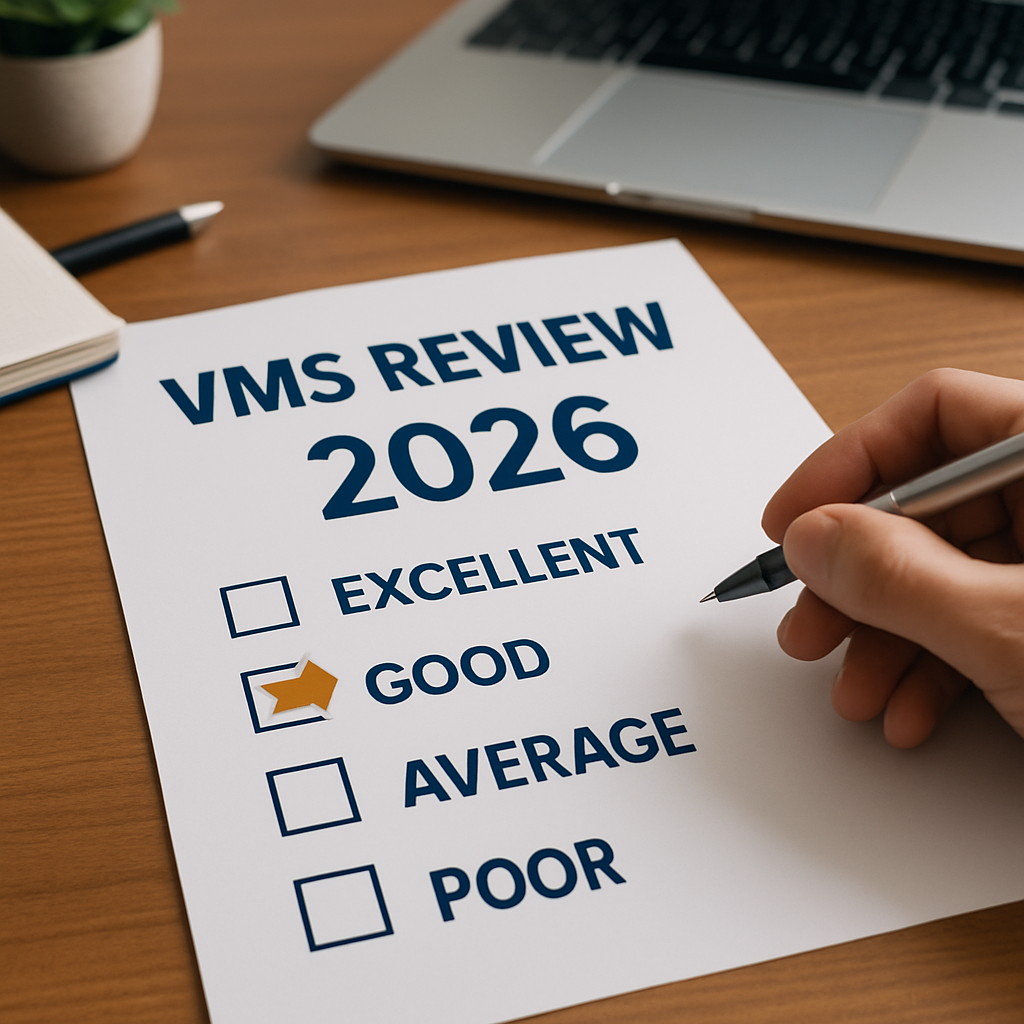The contingent workforce has grown exponentially in recent years, but many organizations are still lacking the technology required to manage both their contingent workforce management program and their staffing agencies effectively.
That’s because manual methods, such as spreadsheets, simply do not work. They lead to human error, time-consuming processes, internal inefficiencies and a complete lack of visibility into how the contingent workforce management program is performing and where money is being spent.
That’s why investing in technology is crucial. Businesses that implement a Vendor Management System (VMS) into their contingent workforce management program will realize superior results.
Staffing Agency Software
A vendor management system is a platform that allows businesses to manage and procure contingent workers, as well as manage and gain insights into the performance of the staffing agencies they use to source those contingent workers.
VMS software allows businesses to automate the processes associated with contingent workforce management, such as engaging staffing agencies, sourcing contingent workers, onboarding workers, time entry, approval and invoicing.
In addition, a VMS also provides reporting and analytics functionality that gives a company insight into how their contingent workforce program is performing and whether their staffing agencies are meeting predetermined targets.
How a VMS is used in staffing
A vendor management system is used in staffing for two primary reasons:
- To effectively manage, and gain visibility, into a company’s contingent workforce.
- To manage the staffing agencies that a business uses to source those contingent workers.
By centralizing the entire contingent workforce management strategy into one platform, a VMS ensures all hiring managers are in sync and working together to achieve their company’s overall objectives.
How a Staffing Agency can benefit from using a VMS
A vendor management system has capabilities and functionalities that result in many benefits that implements one into their contingent workforce management strategy.
Through VMS implementation, a business is able to ensure they have complete control and visibility over their contingent workforce, insights into staffing agency performance and standardized processes across the entire business. This all helps ensure significant ROI on the contingent workforce.
Here are just a few of the top business benefits a VMS can bring:
- The ability to obtain measurable results and advanced analytics into workforce requirements and staffing agency performance.
- Increased efficiency through the automation of processes.
- Reduced costs, through more strategic workforce decisions, better staffing agency partnerships and improved internal processes.
- Improved processes that ensure a company’s workforce remains compliant with employment laws and regulations.
- Contingent workforce management standardization across the entire business, ensuring hiring managers pay staffing agencies predetermined rates and follow standardized processes.
- A better vendor onboarding process for improved staffing agency partnerships.
How long does it take to Implement a VMS?
With more vendor management system options to choose from than ever before, there’s a good mix of systems that are similar and others that have different functionalities.
These functionalities have a big impact on implementation time - while many of the traditional VMS providers are complex and often way too confusing for companies with smaller amounts of contingent spend, new VMS systems are scaled back and focus on the core functionalities you need.
VMS implementation time for some of the larger VMS platforms designed for enterprise can take many months, while implementation with an easier-to-use platform can be as little as a few days.
Learn more about the benefits of a VMS
Learn more about the Benefits of a VMS and what to look for when choosing the best VMS for your organization. Download our Free VMS Buyer's Guide here:
Discover the Power of Conexis VMS
Conexis VMS is purpose-built for organizations seeking to manage their contingent labor spend effectively. Here’s why we're the right choice:
- Fast Deployment: Get up and running in weeks, not months
- Transparent Pricing: Flexible pricing with no hidden costs
- White-Label Ready: Customize the platform with your brand
- Real-Time Insights: Make faster decisions with built-in analytics
- Audit-Ready Compliance: Store contracts, worker data, and rates in one secure hub
About Conexis VMS
Conexis is an award-winning Vendor Management System built for organizations that want the power of enterprise software without the complexity or cost.
Leveraging the latest technology, Conexis delivers the expertise, reliability and security of enterprise systems, while offering the flexibility, user friendliness and tailored, personal service you require. Learn more about our Company and why organizations Choose Conexis VMS.
Looking to Switch Your VMS or Just Getting Started?
Whether you are looking to Switch your VMS, or just Getting Started, we are here to help. Contact Us for a Free No-Obligation Consultation, See how Easy Conexis is to use by taking a quick 2 minute Self-Guided Online Demo, or Book a Personal Demo Today!
Additional Articles in our "VMS for Staffing Agencies" series
- Staffing Agencies Guide to Vendor Management Systems
- Staffing Agencies: How you can use a VMS to manage your business
- Staffing Agencies: Why you absolutely need a VMS (LinkedIn Article)
- Staffing Agencies: 6 Ways VMS Data Benefits Your Agency & Your Clients
- Staffing Agencies: How a White-Label VMS can grow your business
- Staffing Agencies: How you can retain clients by offering a VMS
- Staffing Agencies: Why you should implement your own VMS
- Staffing Agencies: How you can maximize your Master Vendor Program with a VMS
- Staffing Agencies: 5 reasons you need a VMS for Light Industrial contracts
- Staffing Agencies: 5 must-have features when choosing a VMS
- Staffing Agencies: How you can use a VMS to manage your business
- Why Staffing Agencies choose Conexis VMS







